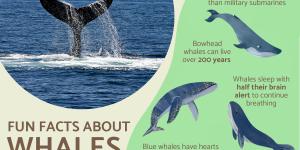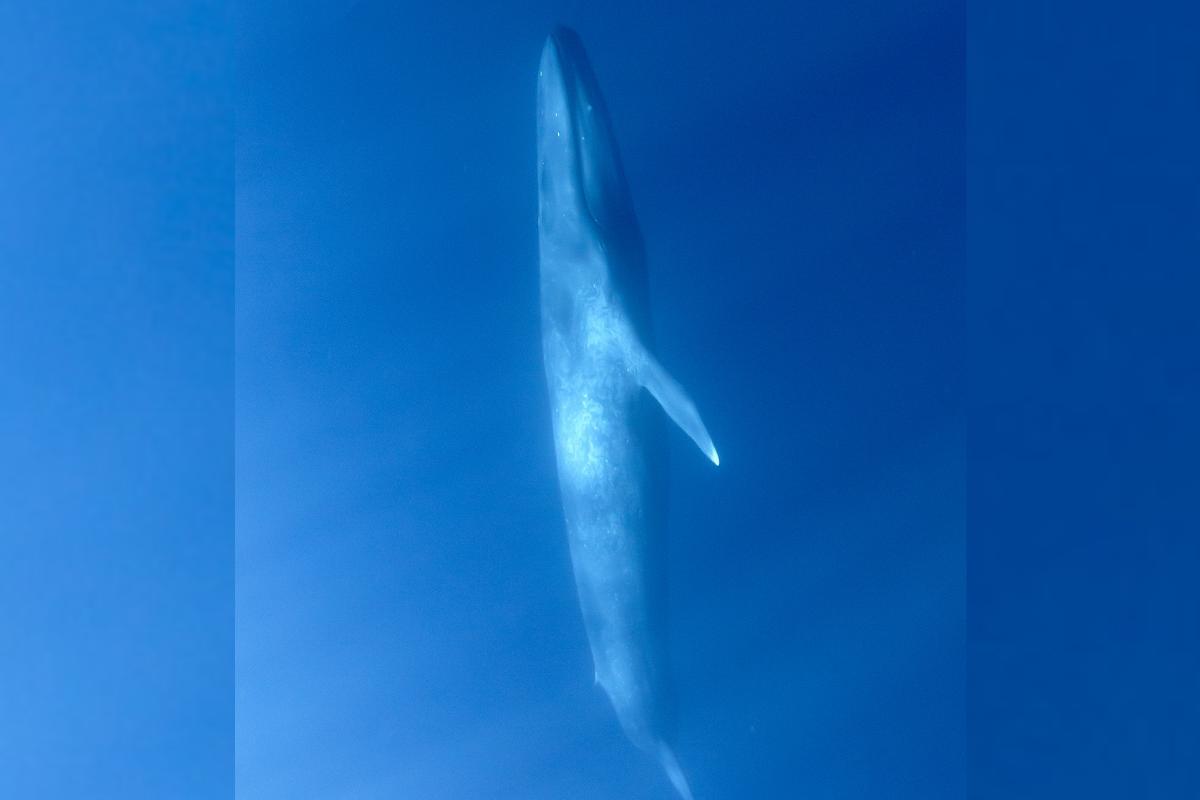How Do Whales Sleep Without Drowning?


As with all cetaceans, whales have an amazing ability to sleep while in the water. Although whales can dive underwater for long periods, they cannot breathe underwater like fish. They have to rely on surfacing to breathe in air and carry out respiration. This leads thedailyECO to ask how do whales sleep without drowning? They do so thanks to a strategy known as ‘unihemispheric sleep’. Unlike most terrestrial animals that enjoy deep and restful sleep, only one cerebral hemisphere of the whale rests at a given time. This means whales are able to swim and sleep simultaneously. Keep reading to know more about how whales have adapted this incredible ability.
Do whales sleep?
There are very few animals that don't sleep at all, but they may do so in a very diverse range of methods. Whales need sleep to survive. For this reason, they have developed a unique sleep mechanism which allows them to sleep while in the water. This is known an unihemispheric sleep and it allows the whale to both sleep and breathe at the same time. This is because one hemisphere of the brain is asleep while the other is in a state of alertness.
This does not mean a sleeping whale is the same as one that is conscious. During sleep, whale activity and behavior can change significantly. Although they can continue to swim, their movements become slower and more rhythmic. They often move in circles or in a linear fashion, allowing them to maintain a constant direction while minimizing physical exertion. Instead of the fast and powerful movements they exhibit while awake, they become smoother and calmer during sleep.
It is important to note that whales do not sleep continuously like humans. They experience brief periods of sleep interspersed with periods of wakefulness . These sleep-wake cycles can vary between species and also depend on the circumstances in which the whales find themselves, such as the presence of predators or the need to swim long distances.

How do whales breathe when sleeping?
Whales have a fascinating way of breathing by using special structures called spiracles found on the surface of their heads. These orifices are homologous to the blowholes of other mammalian species. They are more colloquially known as blowholes.
When a whale approaches the surface of the water to take a breath, it forcefully exhales air through the blowhole. This exhalation is released into the atmosphere which is cooler and lower pressure. This causes the water vapor to condense. When this happens we can see an impressive cloud of visible vapor known as a ‘blow’ is formed. This spectacle can also be caused by water sitting on the spiracles, adding an extra cloud to the blow.
Learn more about the size of whales with our article on the animal with the largest brain.
How do whales sleep without drowning?
The characteristics of a marine cetacean such as whales mean they have to breach the surface of the water to breathe and carry out gas exchange. They also need to do so to monitor their environment. This can mean it seems unclear how a whale can do this while sleeping and not drown. This response is also associated with unihemispheric sleep. This adaptation is essential in allowing them to breathe at the surface while at rest.
Whale breathing is modified during sleep. Unlike their deep, explosive breaths when awake, sleeping whales take slower, shallower breaths. They also have the ability to partially close their spiracles in order to prevent water from entering while they sleep.
Although they are not actually whales, orcas and false killer whales are also cetaceans. Learn the difference between a false killer whale and orca with our related article.

Other facts about whales
Now you know how whales sleep without drowning, you may want to know some other fun facts about whales:
- Their size is very variable: the size of the whales varies from the 6 meters and 3 tons of the dwarf right whale ( Caperea marginata ), to the 34 meters and 190 tons of the blue whale (Balaenoptera musculus), the largest animal on the planet.
- They have baleen: whales lack teeth and instead have keratinized sheets inside their mouths called ‘baleen’, which are non-bony, smooth and flexible structures. Their function is to sieve the water that enters their mouth to obtain krill and other food. Baleen whales are from the parvorder Mysticeti, like the southern right whale, the humpback and the minke whale.
- They have different feeding strategies: whales can be classified into three different groups by the type of strategy they use to feed: swallowers, dredgers and combers.
- They have a thick layer of skin: the hypodermis is the layer of skin that contains the highest fat content and serves to maintain body temperature. Did you know that right whales have the thickest hypodermis of all cetaceans?
- They have high lung efficiency: whales have high lung efficiency, being able to extract 80% of the oxygen from the air, while humans extract only 20% of the oxygen present in inhaled air.
- They have calluses and bumps: the skin of whales can have bumps or calluses. These calluses are thickened and rough areas that are located mainly on the head and upper jaw. These bumps are unique to each individual and can harbor colonies of tiny organisms that cling to the skin. Studying these bumps and calluses helps scientists identify individual whales.
- Whale vomit or ambergris: this is a secretion secreted and expelled by some sperm whales (Physeter macrocephalus). It is a very valuable product because it is very difficult to obtain and impossible to imitate in the laboratory, to which we humans give various uses.
Learn about another fascinating group of whale species with our article detailing what are monodontids?
If you want to read similar articles to How Do Whales Sleep Without Drowning?, we recommend you visit our Facts about animals category.
- Suarez, H. C., & Durandeu de San Gil, L. (2017). “Getting to know the southern right whale”.
- Toledo, V., & Ross, A. (2004). “Unihemispheric sleep in dolphins”.







